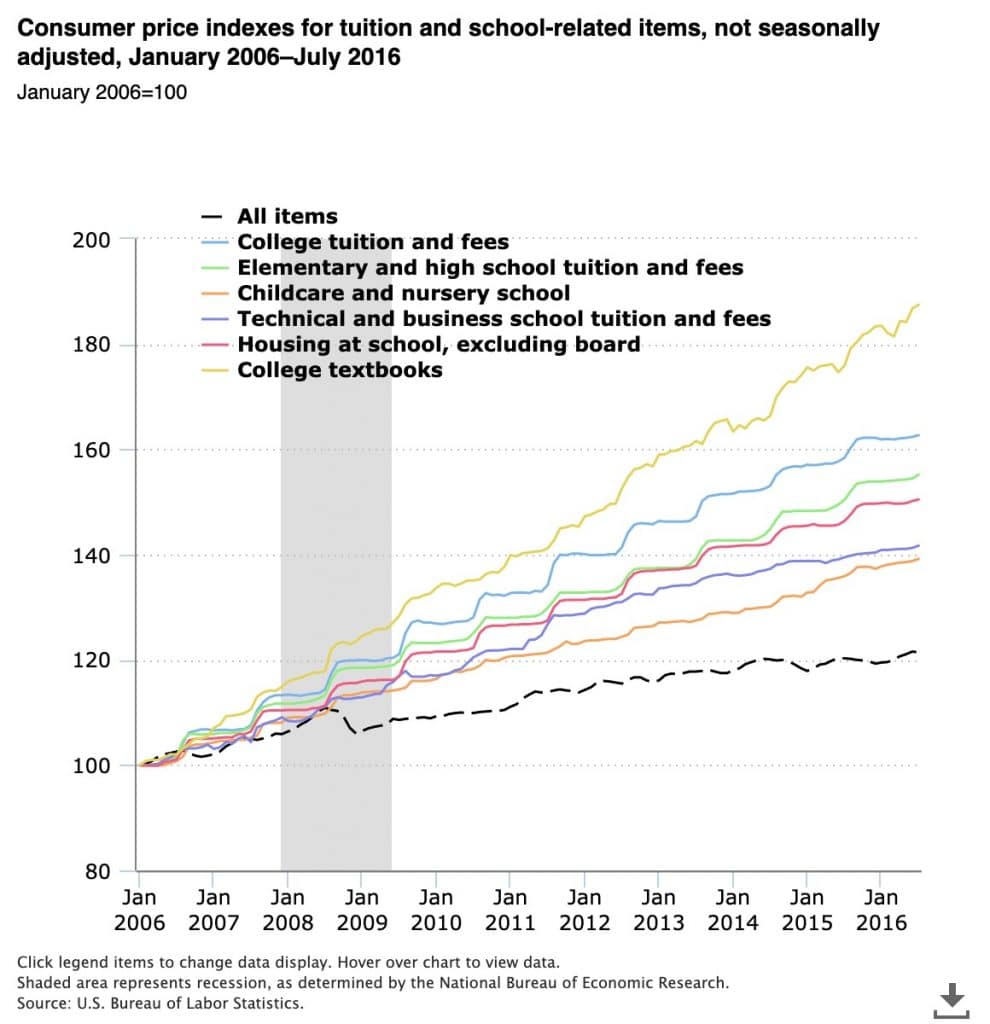OER have been around for more than a decade. They are created with rigor and peer reviewed by academic faculty, shared with others online through open licensing, and they have been endorsed by UNESCO as a way to promote affordable education in fulfillment of the UN’s declaration of Human Rights. OER are in use in colleges across the country, and studies have increasingly shown that they improve student grades and reduce the undergraduate drop-out rates.
UNESCO, Sparc Open Education Fact Sheet, University of Georgia
Why OER?
College textbook prices rose 1,041% from 1977 to 2015, over three times the price of inflation. According to the US Department of Labor, textbook purchasing costs rose at a rate higher than any other student expenses from 2006 to 2016, including tuition.

United States Department of Labor Bureau of Labor Statistics
Student anxieties from textbook purchasing is rising.
According to polling by the publisher Cengage, students in 2018 viewed textbook costs as their second biggest financial stressor.
- 43% claimed that they had to skip meals to buy textbooks.
- 31% had to take fewer classes.
- Stress from textbook costs is almost equal to the stress of paying tuition.
- Minority students have even higher emotional burden from textbook purchasing.
It’s not just about the money…
With OER, educators not only increase students’ access to materials by removing cost barriers. They become active participants in a new pedagogical movement.
Fact:
- Traditional textbooks often do not cover all the topics that instructors want.
- Many students often do not find traditional textbooks motivating or helpful (e.g. A 2018 survey by Clemson Libraries found that 14% of students who bought textbooks did not even use them.)
How OER helps:
- OER materials are meant to be customized, selectively used, and combined to serve an instructor’s needs.
- OER give instructors a greater variety of materials to choose from, in different media, allowing educators flexibility in designing courses.
- Materials such as datasets, primary sources, interactive learning objects encourage activity-based teaching, challenging students to engage in independent and group study and placing them in control of their own learning.
- OER are meant to be shared. Through sharing them instructors increase their profile, gain a better understanding over copyright and save time from planning their own classes by using the work of others.

